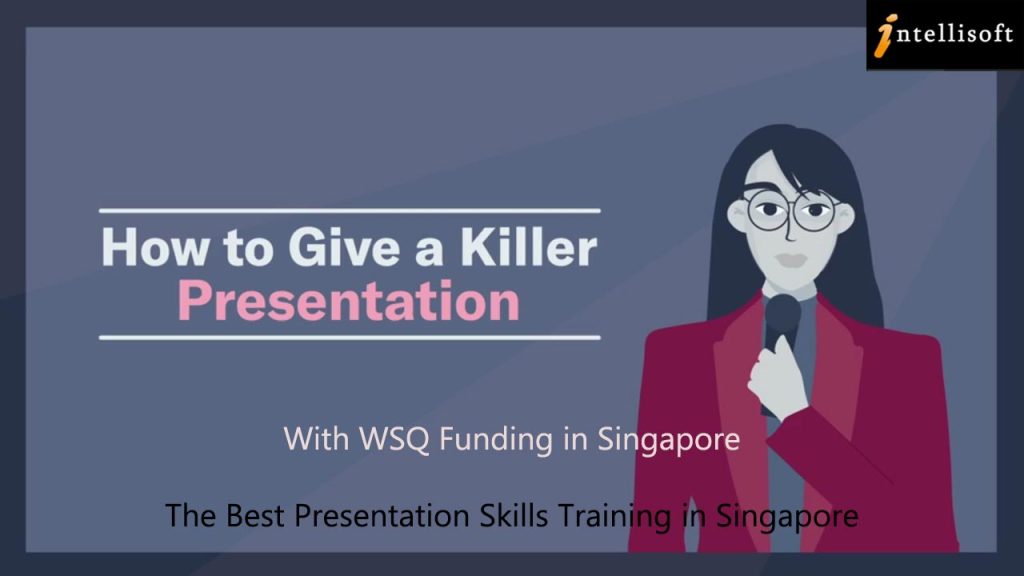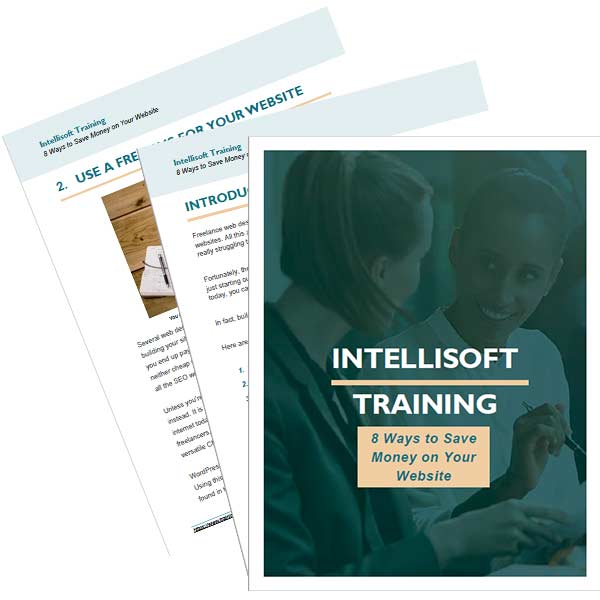A killer presentation does not happen by accident. It requires careful planning, practice and impeccable execution.
You must know how to organize a presentation in order to make an impactful presentation.
Steve Jobs was known to make stellar presentations that used to get standing ovations. They seemed so natural, off-the-cuff. It seemed that Steve was just talking to us, completely naturally.
Steve did confirm that he planned and rehearsed his keynote speeches hundreds of times… what image to show, what words to go with it, everything was planned out exactly, step by step.
So if you are thinking that you’ll just wing it, handle it on the fly… you are seriously mistaken.
You will never get a second chance to make a first impression.
Make sure your first presentation, your first impression is a lasting one, and results in the sale, or meets the objective you wanted to achieve.
After all, you have to make presentations all the time – to management to get the budget, to clients to convince them to buy your ideas or your products, to your colleagues and your team members to help you succeed.
Let’s see what it takes to organize an effective presentation in the best way.
First of all, effective presenters use the art and science of presentation really well. They work on all the key aspects of a killer presentation – the opening, main content, delivery, body language, engagement & eye contact with the audience, and end with a flair.
Step 1: Planning a Presentation
You must plan your presentation based on several important factors: target audience, time, level of detail, goal to achieve etc.
Target Audience:
- Who is your target audience members?
- What level of knowledge do they have on the topic?
- What would they want to know?
- What do they need to know?
- What is their level in terms of the topic:
- complete beginners, or knowledgeable stakeholders,
- kids or clients,
- technical or non-technical?
Time Available:
How much time do you have for this presentation: 5 minutes, 15-30 minutes, 2 hours, or a full day or two.
The whole presentation must be structured based on the available time limit.
Also, don’t use up all the time to present only. You must keep some time for a Questions & Answers session at the end, for the audience to clarify any points.
Use of Presentation Slides or No Slides:
Based on the nature of your presentation, target audience and the time available, you have to decide if you will use any visual aids – presentation slides or not, or something else. This important decision: whether we will or will not use slides depends on the audience level, their knowledge, the level of detail required and the time available for you to present.
What is the Purpose of Your Presentation?
What goal do you want to achieve? What’s the objective?
Are you presenting to convince people to do things in a certain way, or are you persuading them to follow your way or support a cause or a project?
For sales presentations, the objective is to convince people that your product or service is the best for them and that you are looking at their interests first and foremost.
If you are trying to get some budget, headcount, or resources, you must showcase the problem, and how the additional budget or headcount will be used to finish the project faster, or with the required quality that is desired.
If you are giving a status update of your project, you must briefly tell about the project, the timeline, the current status, and the current issues you are facing. Is the project on time and on a budget? Are there any delays? Are you foreseeing any issues along the way? It is your job to tell the management and key stakeholders about the issues on time. When showcasing a problem, it may make sense to go through the issues in chronological order.
Finally, don’t present a problem, and expect the stakeholders to provide you with a solution. That’s not how it works.
In my opinion, if you are presenting a problem and need buy-in from the stakeholders, you must showcase the problem, and then also propose a couple of solutions.
This way, you are not asking the audience to think of a solution. Instead, you are showing them that you are smart enough to think of multiple solutions. Further, go deeper into each solution, and tell its pros and cons, the costs involved, the time saved, how this solution will be used or implemented, and how it will help the company & the situation.
Do this for both solutions. Then at the end, you can tell them about your recommendation – which option you propose, and why you want them to choose it.
With this approach, a well-thought solution can be easily adopted, and the management can then agree to fund it or choose it. So instead of thinking of a solution in the meeting or presentation, you have got them to decide on a solution, and move ahead.
This saves time for everyone, and you are seen as a problem solver, not a “problem” in the company.
Step 2: Outline Your Presentation
To outline your presentation, first, do some brainstorming on a piece of paper. A simple way is to come up with key ideas for the body of your presentation.
- What are the key points of discussion?
- For each main idea, what are the supporting sub-points.
- You can use post-it notes, so you can arrange the points in a logical order. Or else if you like to do it on paper, simply write all the points on paper.
- THen number them in the order of importance.
- Don’t save the most important point for the last. If the people lose interest in your presentation, they will leave, or switch off…
- To keep them engaged, keep a sense of urgency.
- Organize your presentation so that the most important points are at the forefront.
- Look for different ways to organize the information.
Early on in my career, I did a fun presentation for the company family day – Top 10 Tips For Better Photography.
So I had the 10 tips to cover already and done. And I spent the first 10 minutes on the first 4 points.
As I realised that I had little time left, I hurriedly went through the remaining points. Although people liked the tips, they only remembered the first 2 or 3 and in the end, concluded that the presentation was quite rushed.
After the talk, one of the senior directors suggested to me to not have mentioned the word 10 Tips upfront. Instead, if I just said “Top Tips For Better Photography“, and then used the time available to go through them as time permitted.
I could have still used 4-5 points, and depending on the audience engagement, and time available I could elaborate or skip some points.
I did exactly this next time, in a follow-up presentation – and nobody knew what I had skipped.
Instead, my next speech was voted the best speech, and a lot of people came up backstage to comment on my photography skills, and how much they had enjoyed the tips. I had covered only 3 tips in those 10 minutes.
The key messages were delivered. But I had another 7 ready. So I did offer some additional tips as people related their problems with lighting, motion blur, child photography etc. And I was soon recognised as a “photography expert” in the company.
Organize the presentation into multiple main points & sub-points.
Try to reduce the points to the bare minimum. You won’t’ have the time to go through each and every point. But you can keep this information in backup slides, in case it is needed.
Step 3: Develop Your Presentation
As you begin to develop your presentation, come up with stories, visuals, and pictures to illustrate points. People may forget the points but will remember the stories.
When using PowerPoint Presentation Slides, keep it to a minimum.
Follow these important points while building your slide deck with a good structure:
- No more than 3 bullets on a slide. Too much information can make the slide boring and wordy. Keep one slide to a specific topic only.
- Use big font sizes
- Use lots of relevant images. Big clear images are better than animated gifs. Make sure images are good quality and clear enough. No one likes grainy images.
- Use examples to illustrate the point rather than just giving the facts.
- Keep to a minimum number of slides.
We do not wish to bore or kill people with 200 slides. I am sure you must have heard of the “Death by PowerPoint” overdose…
While developing your presentation, state the agenda upfront. You can use the following structure:
- What will you cover today
- Cover it succinctly
- Recap of what you have just told them
This kind of structure and organization helps people to gain clarity and stay focused.
A great idea is to run through your presentation with a peer or colleague to see if you missed out on any important ideas.
Step 4: Prepare Your Presentation
Once you have your presentation points prepared, and the slide deck is almost ready, you are not done.
You must practice giving your presentation. You have to prepare well so you are not reading off the slides, you don’t have to keep looking at the slides.
With enough practice, you only need to glance at a slide to know what to talk about. And with enough practice, the points should flow so well that you needn’t even glance at the slides.
One of the great examples is to do like Steve Jobs. Steve would have the slide clicker in his pocket, and he knows at each click what image will be displayed. So he casually looks at the people and talks about his ideas.
And at the right moment, he uses the clicker, and the audience sees the next image exactly as the right words come out. Perfectly timed out.
This requires you to give that speech a few times to really master it. Since I have given my Photography Tips talk at least 80+ times, I know the tips that the people like the most, and I have shuffled them accordingly over a period of time.
I know the image that I have picked for each point, and I can literally talk through the points while looking at the audience, without having to glance at the slides.
This engages the audience and builds a better rapport. The audience’s attention never wanes. Instead, the audience sees you as a confident presenter, an “expert” in the field who knows what he or she is talking about. And this added credibility comes in really handy when you are persuading them to take the necessary action – do the thing that you wanted them to do.
A good starting point for your next presentation is to start with a story. Stories are a powerful tool that will immediately engage the audience’s attention.
Questions & Answers
Make sure you keep enough time for a Q&A session towards the end. Don’t use up all of your allotted time for the entire presentation. Keep a few minutes in the end based on the amount of time.
People will have questions, and it is best to answer them upfront. In fact, anticipate them. Tell them that you will be taking questions towards the end. This way, they won’t be interrupting your presentation midway.
A good idea is to be prepared for some common questions. And keep some effective notes for questions at the end.
Conclusion: How to Structure Your Presentation The Right Way
Fear of public speaking is common.
You can overcome this fear by having a planned, prepared & well-structured presentation. Practice and you will gain confidence.
When preparing your own presentation, Structure the presentation into a clear beginning, middle and end.
As an effective way, stick to the points, and cover them well in the clear structure you have defined.
Like any other skill, you get better by making presentations. Not by just reading about them.
And having a guide to critique your speech and tell you your strong and weak points will do wonders.
Get Trained in the Art of Creating & Delivering Killer Presentations
At Intellisoft Training, we have several presentation courses that can help you. As a first step, it is a safe environment and the best place to practice your skills in a good way.
- Delivering Killer Presentation – 1-day session
- WSQ Funded Business Presentation course – 2-day session
In each of these presentation courses, you will be preparing and making several presentations.
And our expert trainers will guide you to improve your presentation skills and take them to the next level, so you always make a successful presentation.
What are you waiting for?
Get started today!



